- Joined
- 1 April 2006
- Messages
- 11,369
- Reaction score
- 10,176
Last edited by a moderator:
overscan said:Source: Air International March 1977
elmayerle said:overscan said:Source: Air International March 1977
I'm told that huge two-bladed rotor led to some canopy strikes, which was one reason this design lost.
elmayerle said:overscan said:Source: Air International March 1977
I'm told that huge two-bladed rotor led to some canopy strikes, which was one reason this design lost.
At the end Hughes won the competition ! ;DTailspin Turtle said:elmayerle said:overscan said:Source: Air International March 1977
I'm told that huge two-bladed rotor led to some canopy strikes, which was one reason this design lost.
Actually, it wasn't the two-bladed rotor but the requirement for air transportability dictating a very low rotor placement, and it wasn't canopy strikes, but at least one slight tail rotor drive shaft strike during slope landings, which eventually resulted in a tail rotor drive shaft failure while in high-speed sideward flight during Army pilot training. Ron Erhart, the Bell test pilot providing the training, almost recovered from that very awkward situation (he wasn't on the controls so he lost a few precious seconds before he realized that the Army pilot didn't initiate the resulting yaw) but crashed. Since the upcoming Army evaluation at Edwards AFB (for which the training was being accomplished) required two aircraft, Bell created a replacement in only 30 days from the static test article, spare parts, hardware off the crashed AAH-63, and some new parts.
Neither the Bell nor the Hughes AAH was ready for prime time, (e.g., Hughes had potential canopy strike problems and had to raise their rotor too) but the Army evaluation team believed that the Hughes design deficiencies were more likely to be correctable than Bell's at less penalty to hover and cruise performance and maneuverability.
A competent design, the Bell Model 409 lost out in the US Army's Advanced Attack Helicopter competition to the [Hughes YAH-64]. Several senior officers did not like the two rotor design, and doubts were expressed about the stability of the tricycle landing gear.
Full-Scale Crash Test of the Bell YAH-63 Helicopter
In 1981, a full-scale crash test of the YAH-63 prototype helicopter was conducted at the IDRF
[37]. This helicopter was designed and manufactured by Bell Helicopter Textron as its bid in the
competition for the Army’s Advanced Attack Helicopter (AAH) program. The crash test was performed
to evaluate the energy-absorbing and load-limiting features of the airframe, landing gear, and seats. A
pre-test photograph of the YAH-63 helicopter in the impact position is shown in Figure 16(a). A
photograph of the YAH-63 during the crash test is shown in Figure 16(b). The Bell airframe did not win
the award, which went to the Hughes Helicopter (now Boeing) AH-64 Apache.

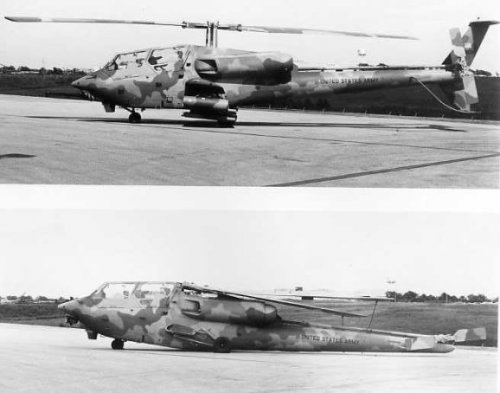
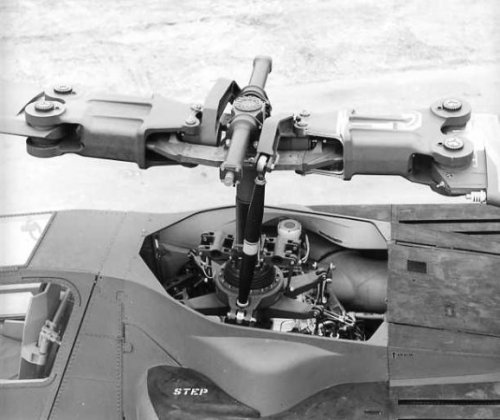

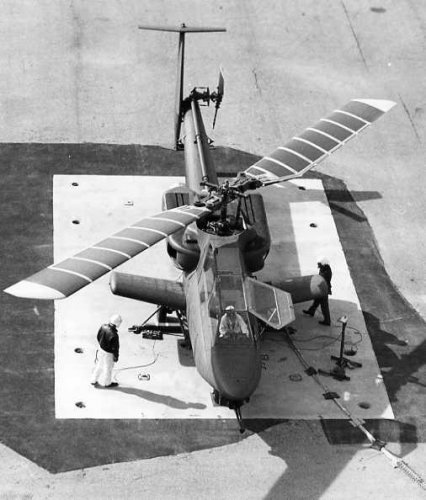
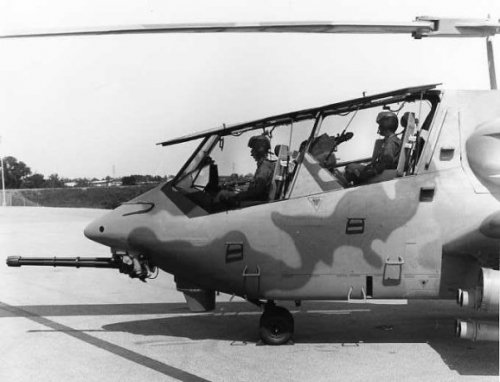
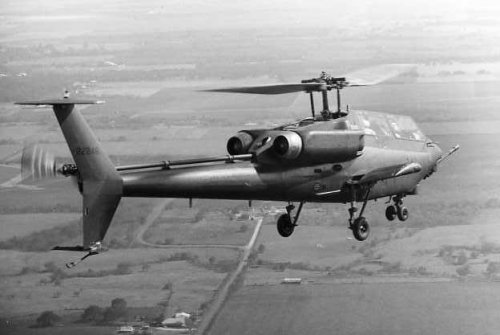

JohnR said:What; if any, was the advantage/disadvantage of using a two bladed rotor?
JohnR said:What was the intended location for the fire control optics and the flir, I presumed that it would be over the cockpit but there is no sign of it on the prototypes.
